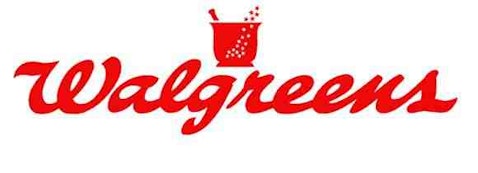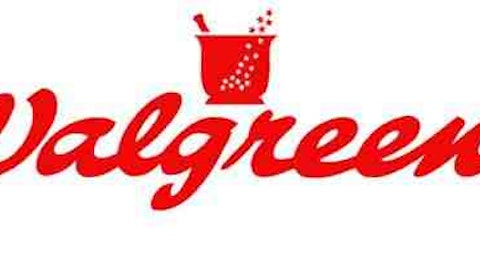In my last article on Walgreen Company (NYSE:WAG), I gave light on pressing issues revolving around the world’s largest drugstore. After a rough 2012, Walgreen seems positioned to have a much improved 2013. This article will focus in on Walgreen acquisition of Alliance Boots, and the estimated synergies that could potentially be realized within the next five years.
Early estimates predict the company to realize $100 to $150 million in combined synergies from the Alliance Boots partnership in 2013, and more than $1 billion by 2016. To elaborate a little further on the synergies Walgreen looks to generate through the Alliance acquisition, I will tell you what its executives stated in their 4Q earnings call, and what I interpreted from their statements.
Walgreen began setting up joint ventures to realize $100-150 million in the first year. They set up six new global synergy teams in coordination with their partners at Alliance Boots and both companies have committed a number of key leaders to these teams. They also have opportunities for global expansion beyond the U.S. and Europe.
When asked about how he feels about the $1 billion synergy estimate, Gregory Wasson, CEO of Walgreen Company, stated:
“We’re certainly confident in the number we gave, and for a variety of reasons. The majority of that is cost opportunities and we’ve got the synergy teams in place that have been working on this, frankly, even months before we closed to give us some real insights as to what’s available.”
When Wasson stated most synergies would be cost opportunities, there are various possibilities to how he could cut costs. The easiest cost reduction Walgreen can realize through the acquisition is through sharing and coordinating staff and other resources across business units. Wade Miquelon, Walgreen CFO, stated that there would be no planned SG&A savings achieved through employee layoff, and said most of the savings would come from structuring themselves to get procurement savings.
The acquisition has given Walgreen an even larger drugstore presence and has expanded their services into the wholesale business. It’s unclear how the company will obtain cost synergies through resources, though. I suspect that Alliance’s wholesale business could provide some cost benefits, but they have kept quiet about details of integrating their wholesale business into America or expanding it internationally.
The acquisition of Alliance Boots has given Walgreen a global footprint that could create cost savings for both drug manufacturers and the company itself. Currently, the industry’s cost structure allows a self-warehousing chain to pay a lower price when purchasing from a wholesaler for delivery to the retailer’s warehouse, than it would when purchasing directly from the manufacturer. Walgreen could bypass wholesalers like Cardinal Health if manufacturers change their policies and allow the global pharmacy chain to get a price break from increased volume.
The table below shows revenues derived from major drug retailers by wholesalers like Cardinal Health, Inc. (NYSE:CAH) and McKesson Corporation (NYSE:MCK). After losing their contract with Express Scripts, it’s essential that Cardinal renews their contracts with CVS and Walgreen. Both expire in 2013. With Walgreen’s acquisition of Alliance Boots, which operates more than 370 distribution centers, it may not need Cardinal’s services. As stated in the Alliance Boots 2011 annual statement:
“An increasing number of branded pharmaceutical manufacturers are seeking further efficiencies and control by switching from selling via multiple pharmaceutical wholesalers to either selling direct to pharmacies (using relatively few distributors, such as Alliance Healthcare, to deliver the product, invoice customers and collect payments), or selling via a select number of national wholesalers such as Alliance Healthcare.”
Looking at McKesson, a large portion of their revenues come from CVS Caremark Corporation (NYSE:CVS) and Rite Aid Corporation (NYSE:RAD), but the companies’ sales are more diversified than Cardinal (shown in percent of revenues by top 10 customers). CVS has had a long relation with Cardinal, putting McKesson at risk that CVS could consolidate its distribution needs to strictly Cardinal. Both of these companies may offer short sale opportunities. Cardinal has a short interest ratio of 0.8, while McKesson has a short interest ratio of 1.3. Cardinal is trading at 13.26 times their earnings, while McKesson is trading at 14.69% times their earnings.

The acquisition may put more pressure on drug makers like Abbott Laboratories (NYSE:ABT), Johnson & Johnson (NYSE:JNJ), Pfizer Inc. (NYSE:PFE), and Merck & Co., Inc. (NYSE:MRK). With combined revenues of $110 billion between Walgreen and Alliance, the former should gain some leverage in negations with drug makers. These drug makers have been going overseas to emerging markets such as China and India, selling established pharmaceuticals or “branded” generics. Both Abbot and Pfizer are among those companies making more money on older medications – a strong point for companies like Walgreen and Boots that sell generics to price-sensitive consumers. In 2011, Abbot had $5.41 billion in revenues from established pharmaceuticals. Johnson & Johnson, Pfizer, and Merck, did not disclose 2011 revenues from established pharmaceuticals.
Looking at revenue synergies, Walgreen is making a push to become a “health and daily living destination.” They have already made big steps in achieving this by offering flu shots and other basic medical procedures. Alliance Boots has a similar strategy and has services that Walgreen can bring to America, like optical services. Walgreen’s biggest competitor is CVS. CVS has led the way in innovating and expanding their services and seems to always beat its rival to the punch. The acquisition of Alliance may turn the tables, as Walgreen will be able to bring services with proven European success to America.
Walgreen hasn’t given much detail on the synergies, but whenever two different companies are brought together they bring with them their own mindset and culture (even more so for companies located in different countries). When combining these mindsets, it’s not uncommon for companies to discover unsuspected problems and/or detect unrealized potential. $1 billion in synergies seems pretty steep, but I would hope that executives at Walgreen thought this through before betting the bank on it.
Disclosure: I am long Walgreen





